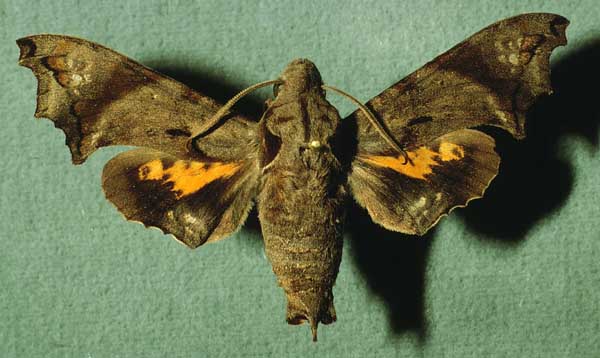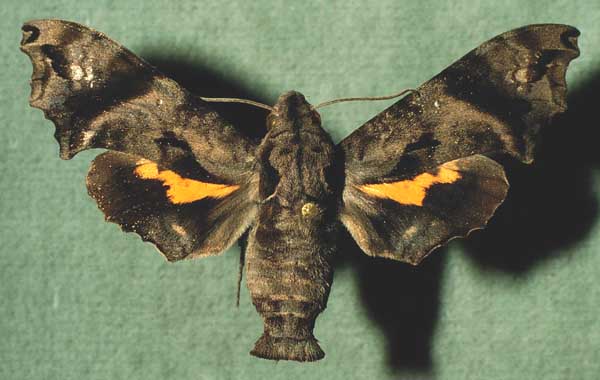|
|
Updated as per The Known Sphingidae of Costa Rica, November 2007
Updated as per personal communication with Jose Monzon (Guatemala); May 2009
Updated as per
AN ANNOTATED CHECKLIST OF THE SPHINGIDAE OF BOLIVIA, December 2009
Updated as per CATE (description; Costa Rica, Venezuela, French Guiana, Ecuador, Peru, Bolivia); February 19, 2011
Updated as per French Guiana Systematics: Sphingidae; May 14, 2011
Updated as per CATE Sphingidae (Venezuela, Ecuador, Peru, Bolivia, French Guiana); May 14, 2011
|
Nyceryx ericea ericea

Nyceryx
ericea ericea, male, Costa Rica, courtesy of Dan Janzen.
This site has been created by
Bill Oehlke at oehlkew@islandtelecom.com
Comments, suggestions and/or additional information are welcomed by Bill.
TAXONOMY:
Family: Sphingidae, Latreille, 1802
Subfamily: Macroglossinae, Harris, 1839
Tribe: Dilophonotini, Burmeister, 1878
Genus: Nyceryx Boisduval, [1875] ...........
Species: ericea ericea Druce, 1888
|
MIDI MUSIC
.....It's a Wonderful World.....
copyright C. Odenkirk
ON.OFF
<bgsound src="world.mid" LOOP=FOREVER>
|
DISTRIBUTION:
Nyceryx ericea ericea
flies in Panama, the specimen type locality, and from
Guatemala;
Costa Rica;
Venezuela: Aragua;
French Guiana: Saul; Saint-Georges l'Oyopok;
Ecuador;
Peru;
to
Bolivia: La Paz (750-1200m).
I suspect it is also present in Colombia; Guyana; and Suriname.
Immediately distinguished by the semitransparent spots in the distal half of the forewing and the tornal area of the hindwing, and the yellow
base to the hindwing upperside.
Olive-black posterior part of tegula sharply defined.
Forewing upperside with several semitransparent spots in the distal half and a black streak on 1A+2A before the middle.
Hindwing upperside with sharply defined basal yellow area, anteriorly with three brownish-black spots that are contiguous with the costal border,
the middle spot thinnest and sometimes prolonged to a line. CATE
FLIGHT TIMES:
Moths are probably on the wing in just
about every month. Specimens have been taken in French Guiana in October-November.
ECLOSION:
Adults eclose, usually within three weeks.
SCENTING AND MATING:
Females call in the males with a
pheromone released from a gland at the tip of the abdomen.

Nyceryx
ericea ericea, female, Costa Rica, courtesy of Dan Janzen.
EGGS, LARVAE, PUPAE:
Larvae feed on
Return to Sphingidae Index
Return to Dilophonotini Tribe
Goto South American Index
Use your browser "Back" button to return to the previous page.
This page is brought to you by
Bill Oehlke and the
WLSS. Pages are on space rented from Bizland. If you would like
to become a "Patron of the Sphingidae Site", contact Bill.
Please send sightings/images to Bill. I will do my best to respond to
requests for identification help.
Enjoy one of nature's wonderments: Live
Saturniidae (Giant Silkmoth) cocoons.
 | 
Show appreciation for this site by clicking on flashing butterfly to the left.
The link will take you to a page with links to many insect sites. |



